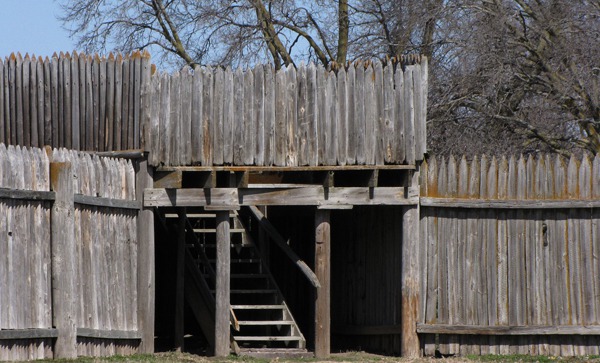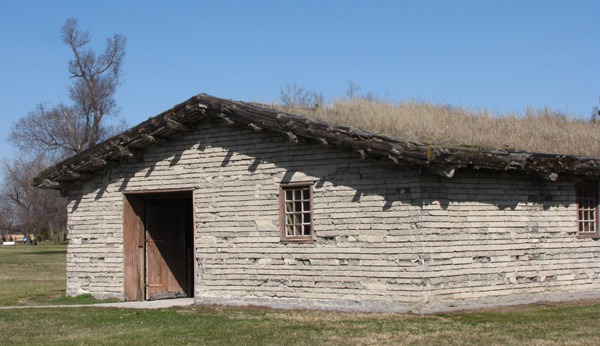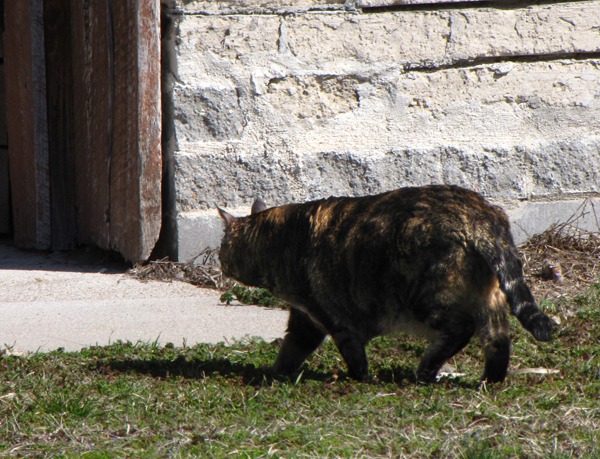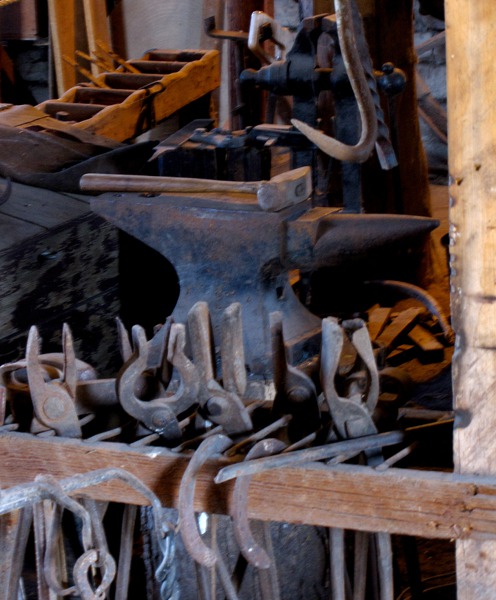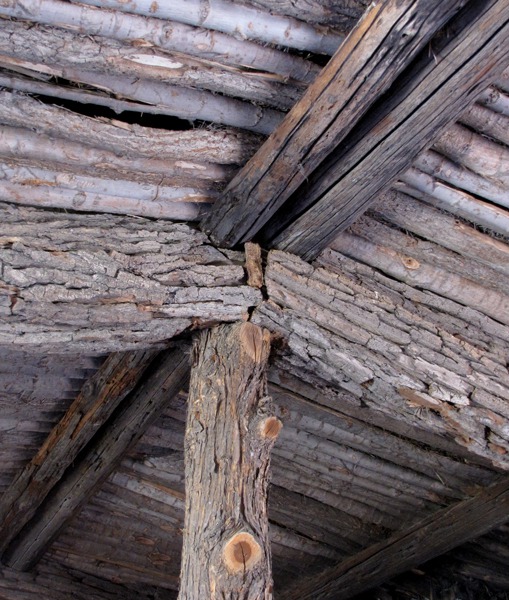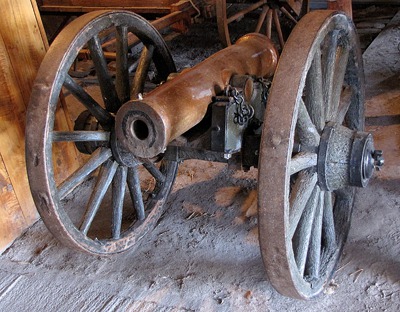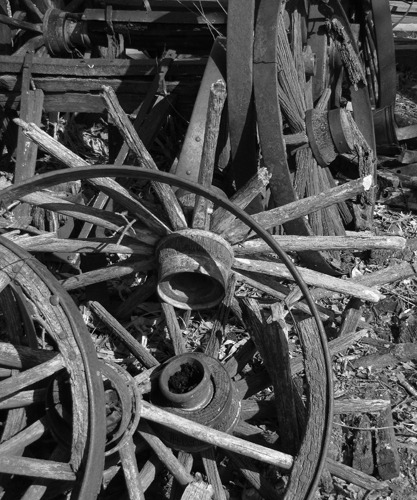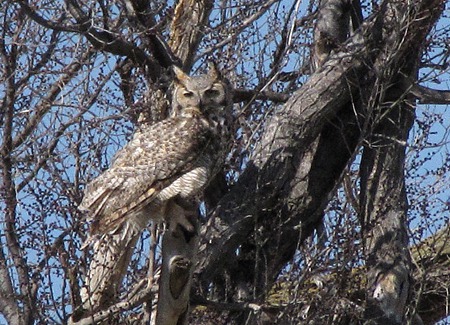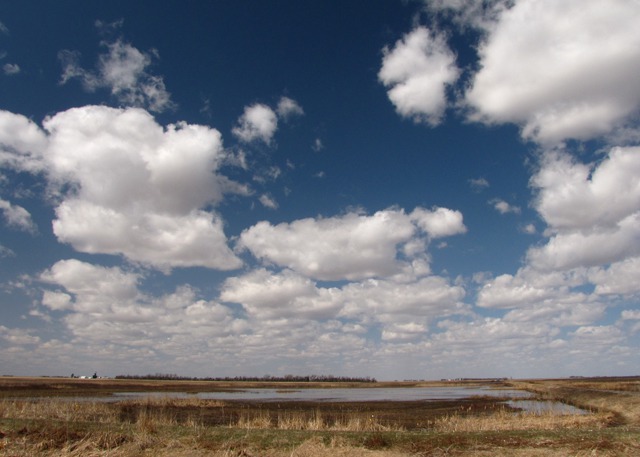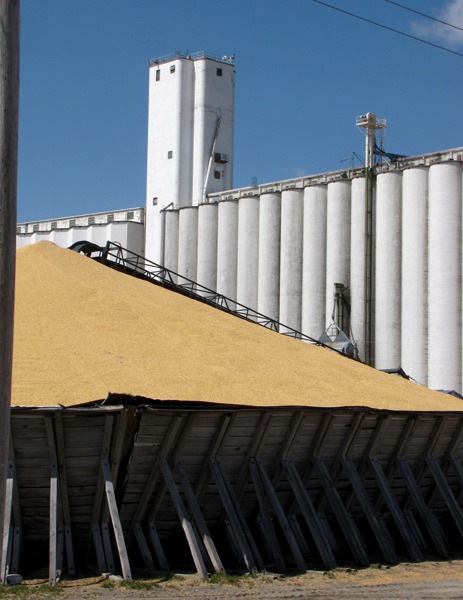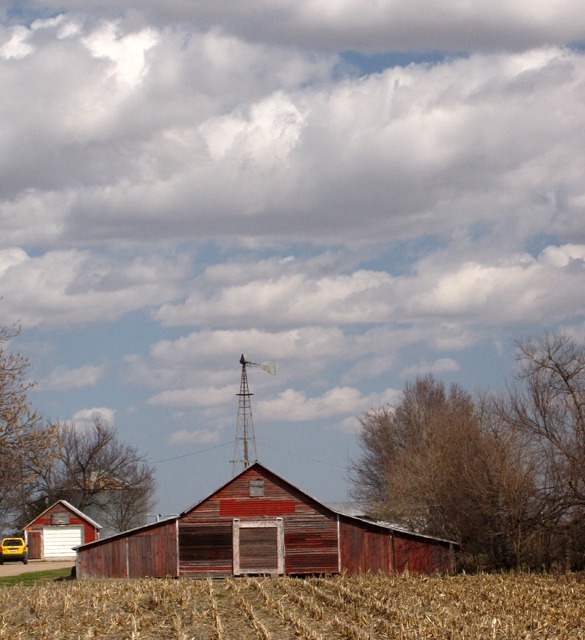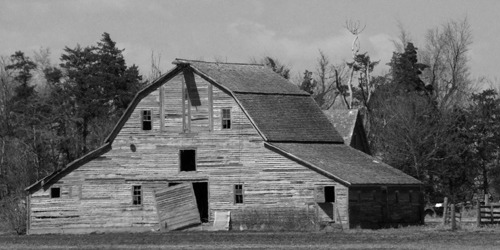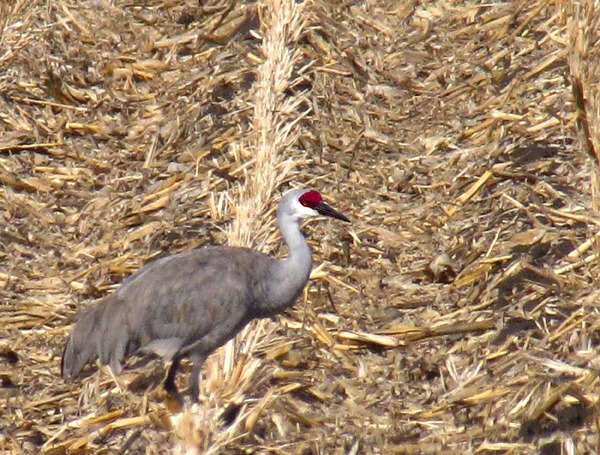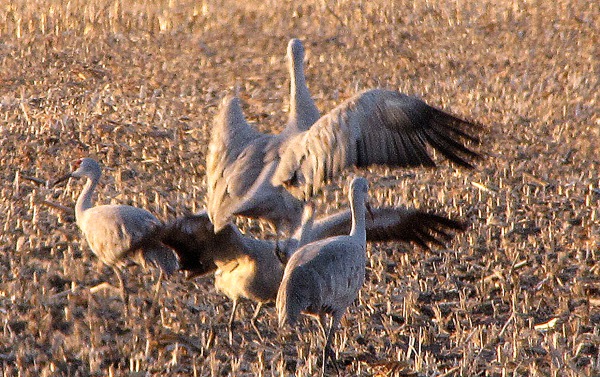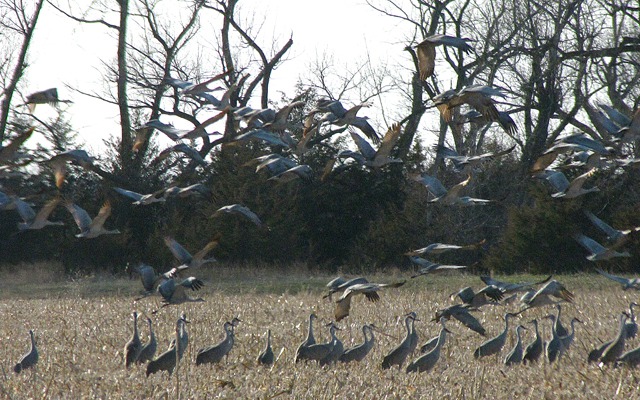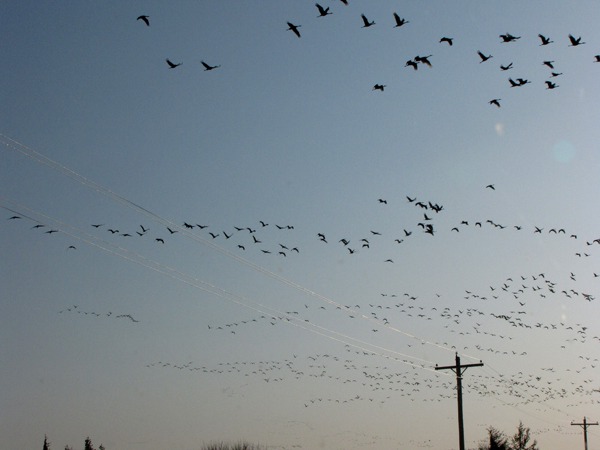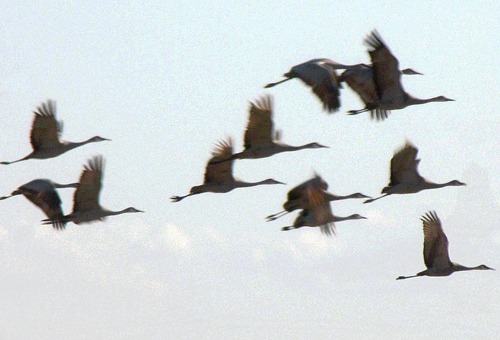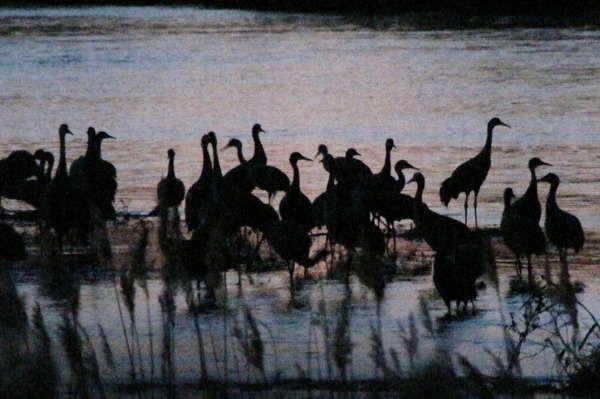Fort Kearney State Historical Park by Louise: 28 Mar 2010: Beautiful weather today!! Sunny, slightly chilly, light wind. Brian, Leesha (our traveling pet cat), and I headed off to Fort Kearney, a Nebraska State Historical Park just south of Kearney. Leesha hiked in the small picnic area, had a wonderful kitty prowl through the original blacksmith shop, and climbed one of the outlook points in the stockade. Great place for a hiking kitty!
After leaving the Smithy we saw a large wing-span bird cross the lawn and went to investigate. Soon after, our friends joined us, and we all went looking for the bird, which turned out to be a great horned owl. It was a great spotting to start the day of birding.
After we watched the owl for a bit, we headed out to what we hoped would be a whooping crane nesting area that someone at the Rowe Preserve had mentioned.
Rainwater Basin Wetland Management District: Our fellow birders convened in the parking lot, and off we went on a birding auto tour in the west Rainwater Basin. The Rainwater Basin Wetland Management District manages sixty-three Waterfowl Production Areas comprised of over 24,000 wetland and upland acres. From the website: The geographic area, called the Rainwater Basin, is a complex of wetlands scattered throughout a 21-county area. The wetlands are shallow basins that provide resting and feeding areas for millions on birds during spring and fall migration. Historically, bison and wildfire kept the wetlands open with annual plants growing during dry summer months and droughts. With bison gone and wildfires controlled, management has to be done to keep these wetlands in a condition favored by ducks, geese, and other water birds.
30 percent of the continental northern pintail population
25 species of waterfowl
27 species of shorebirds
5 threatened and endangered species (bald eagle, whooping crane, piping plover, least tern and peregrine falcon
To date, 257 bird species have been observed in the Rainwater Basin.
For one species, the white-fronted goose, the Rainwater Basin has become a critical stopping point for northward migration. Approximately 90 percent of the mid-continent population of white-fronts stage on these wetlands. An estimated 7-9 million ducks and 2-3 million geese annually stop in the Rainwater basin, including:
50 percent of the mid-continental mallard population30 percent of the continental northern pintail population
25 species of waterfowl
27 species of shorebirds
5 threatened and endangered species (bald eagle, whooping crane, piping plover, least tern and peregrine falcon
Our first visit was to the
Funk Waterfowl Production Area.
It is the largest WPA within the Rainwater Basin at 1989 acres: 1163 acres of wetland and 826 acres of upland. It is known nationally for its abundance of birds during the spring migration and the occasional occurrence of whooping cranes. The wetland extends about three miles in length and is dissected by roads and dikes, forming smaller management units.
Then we made our way to the Gleason WPA. The Gleason Waterfowl Production Area in Kearney County was purchased in 1967, and consists of five tracts of land totaling 569.2 acres. The wetland footprint is 292 acres, and the Fish and Wildlife Service currently owns 98 % of this footprint. The Service also owns and manages 282 acres of associated upland habitat on this WPA. Based on waterfowl surveys between 2000 and 2016, Gleason has had some of the highest concentrations of ducks during spring migration in the district.
We had hoped to see at least one whooping crane, but were disappointed. Ponds scattered though occasional state and federal wildlife areas were tiny islands of habitat in a vast sea of corn fields.
There was no end of old barns and farm houses in the area, and if you like that sort of thing, there was plenty to see without whooping cranes, although that would have been a home run, especially for the more hard-core birders in our group.
The group finished the day at the Crane Trust Nature and Visitor Center, and most stayed for an evening program and observation.
Cranes in the Corn Fields: Brian and I headed back into Kearney on our own, using the Nebraska wildlife observation pamphlet as a guide. We found ourselves on muddy, heavily rutted roads along the river -- not recommended for anything other than a high-clearance vehicle like our Toyota 4-Runner and an experienced driver like Brian.
Great was our reward -- fields of feeding and hopping and chortling cranes.
As the sun went down and the almost-full moon rose, flocks of cranes filled the sky as far as we could see. Now we fully understand how awe-inspiring this migration is.
The number of birds alone is amazing. 500,000 to 600,000 pass through here every year in waves, with 60,000 at a time on the river. Tonight they flew over us non-stop for over an hour. Just think of their precision -- they've been migrating through this narrow spot on the Platte River for thousands of years. Fossil records of cranes very similar to the modern cranes go back nine million years.
Just before it got too dark to see any longer, we spotted a group of cranes gathering on a sand bar. We could only see their silhouettes, but it was a nice way to end the day -- windows down listening to their cries close up, with a full moon rising.
Louise and Brian with photos by Brian. Text and Photos copyright --Goin Mobyle LLC, 2010


